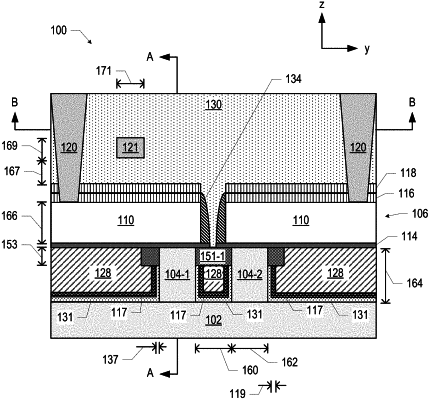| CPC H01L 29/122 (2013.01) [G06N 10/00 (2019.01); H01L 29/16 (2013.01); H01L 29/7851 (2013.01); H01L 23/5226 (2013.01)] | 23 Claims |

|
1. A quantum dot device, comprising:
a base;
a first fin extending from the base, wherein the first fin includes a quantum well layer;
a second fin extending from the base;
a first conductive material between the first fin and the second fin;
a first dielectric material between the first conductive material and the first fin;
a second conductive material between the first conductive material and the second fin; and
a second dielectric material between the second conductive material and the second fin.
|